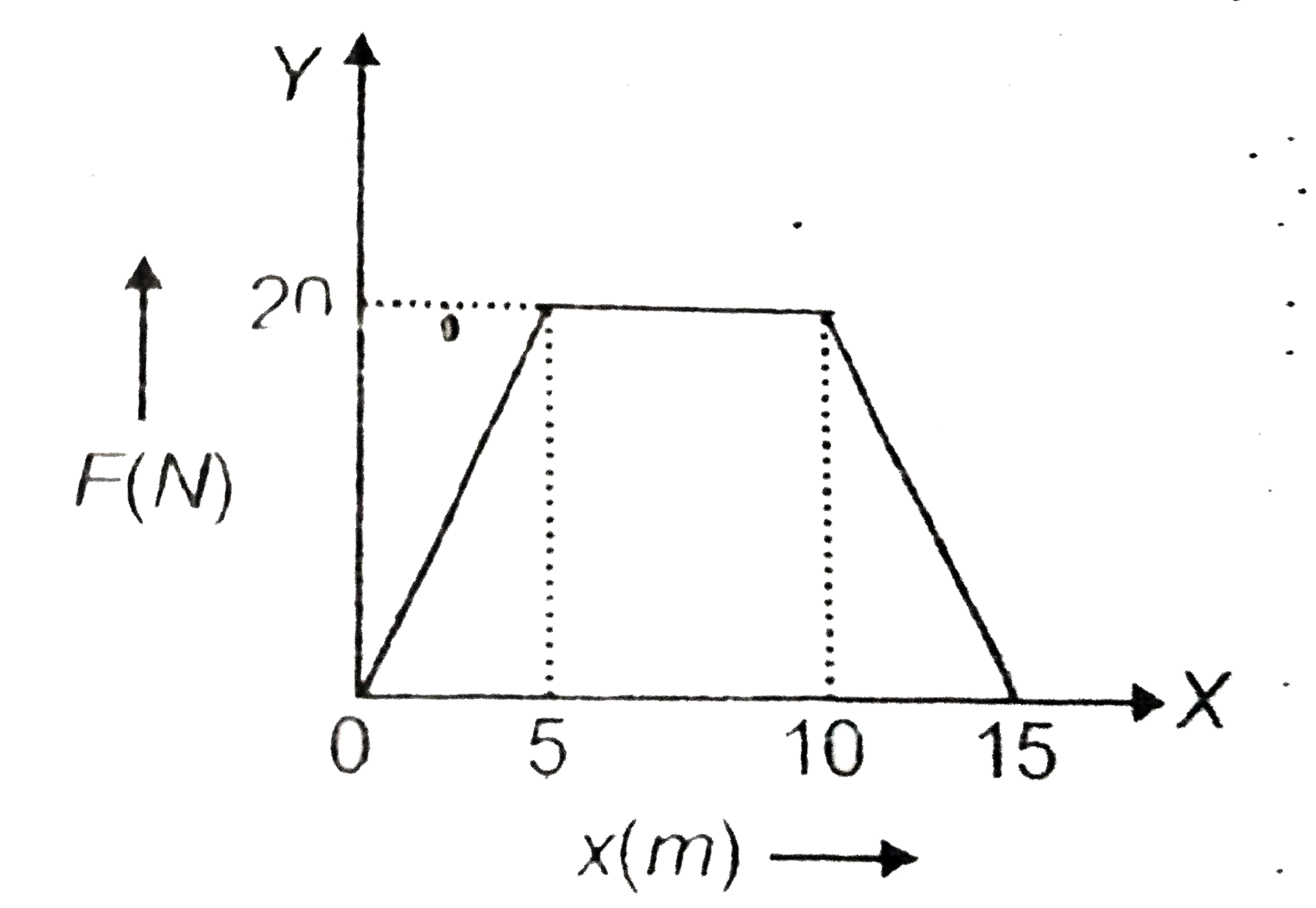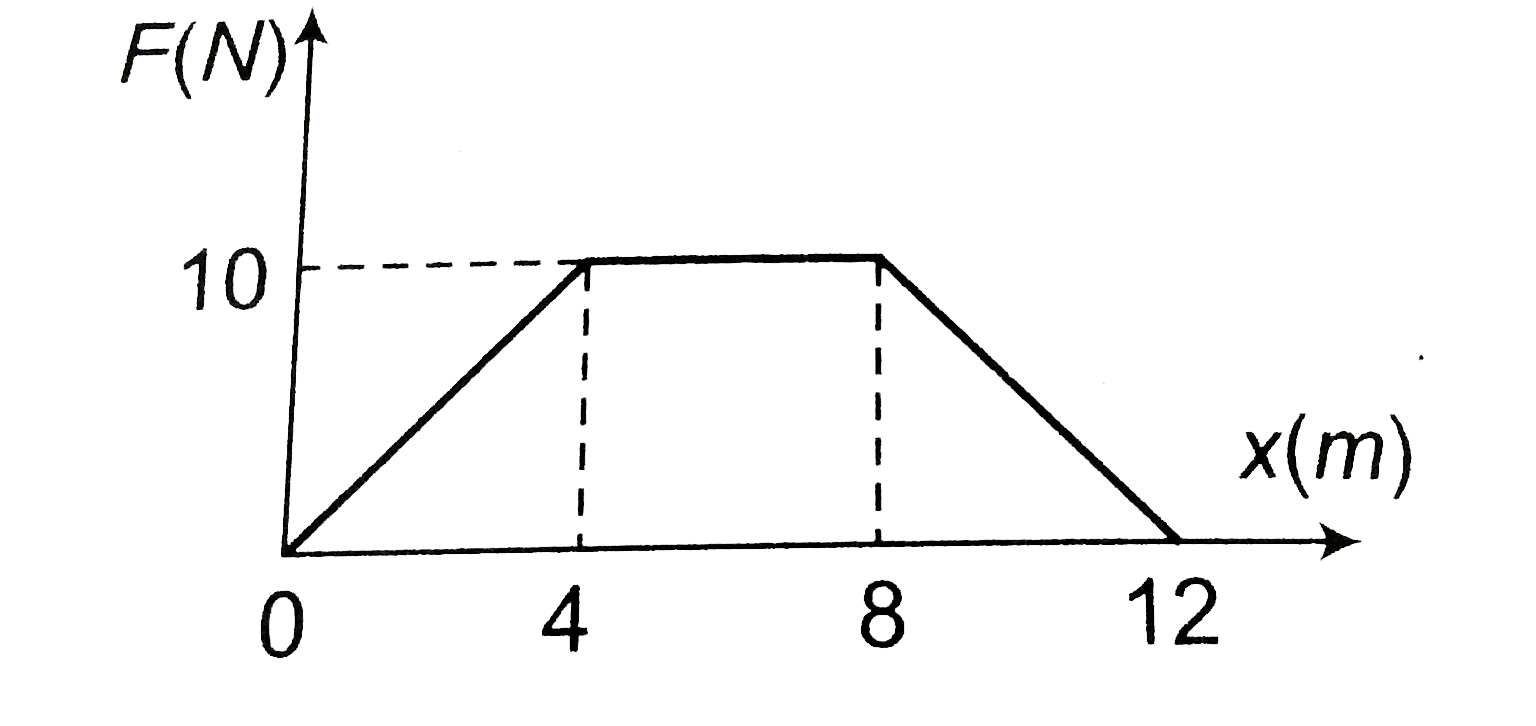A particle of mass 0.3 kg subject to a force F=−kx with k=15N/m. What will be its initial acceleration if it is released from a point 20cm away from the origin?
5m/s2
10m/s2
3m/s2
15m/s2
The correct Answer is:B
To solve the problem step-by-step, we will follow these instructions:
Step 1: Identify the given values
- Mass of the particle, m=0.3kg
- Spring constant, k=15N/m
- Initial displacement from the origin, x=20cm=0.2m
Step 2: Calculate the force acting on the particle
The force acting on the particle is given by Hooke's law:
F=−kx
Substituting the values:
F=−15N/m×0.2m=−3N
The negative sign indicates that the force is directed towards the origin.
Step 3: Calculate the magnitude of the force
Since we are interested in the magnitude of the force:
|F|=3N
Step 4: Use Newton's second law to find acceleration
According to Newton's second law:
F=ma
We can rearrange this to find the acceleration a:
a=Fm
Substituting the values:
a=3N0.3kg=10m/s2
Conclusion
The initial acceleration of the particle when released from a point 20 cm away from the origin is:
a=10m/s2
---
- Mass of the particle, m=0.3kg
- Spring constant, k=15N/m
- Initial displacement from the origin, x=20cm=0.2m
The force acting on the particle is given by Hooke's law:
F=−kx
Substituting the values:
F=−15N/m×0.2m=−3N
The negative sign indicates that the force is directed towards the origin.
Since we are interested in the magnitude of the force:
|F|=3N
According to Newton's second law:
F=ma
We can rearrange this to find the acceleration a:
a=Fm
Substituting the values:
a=3N0.3kg=10m/s2
The initial acceleration of the particle when released from a point 20 cm away from the origin is:
a=10m/s2
Topper's Solved these Questions
- DYNAMICS OF A PARTICLEBook:VMC MODULES ENGLISHChapter:DYNAMICS OF A PARTICLEExercise:JEE Advance (Archive) Level - II (SINGLE OPTION CORRECT TYPE )
Explore 31 Videos
- DYNAMICS OF A PARTICLEBook:VMC MODULES ENGLISHChapter:DYNAMICS OF A PARTICLEExercise:LEVEL 2 ( NUMERICAL TYPE FOR JEE MAIN )
Explore 16 Videos
- DC CIRCUITBook:VMC MODULES ENGLISHChapter:DC CIRCUITExercise:JEE ADVANCED ARCHIVE
Explore 68 Videos
- ELECTROMAGNETIC INDUCTION & ALTERNATING CURRENTBook:VMC MODULES ENGLISHChapter:ELECTROMAGNETIC INDUCTION & ALTERNATING CURRENTExercise:IN-CHAPTER EXERCISE-G
Explore 10 Videos
Similar Questions
A partical of mass 0.3 kg is subjected to a force F = - kx , Where = 15Nm−1 . What will be its initial acceleration when particale is relesed from a point 20 cm away from origin ?
View SolutionA particle of mass 0.1 kg is subjected to a force F which varies with distance x as shown. If it starts its journey from rest at x = 0, then its speed at X = 12 m is
View SolutionA particle of mass 1 kg is subjected to a force which varies with distance as shown. If it starts it s journey from rest at x=0. then its velocity at x=15 m is

View Solution
A particle of mass 0.1 kg is subjected to a force which varies with distance as shown in figure. If it starts its journey from rest at x=0, its velocity at x=12m is
View Solution
A particle of mass 0.1 kg is subjected to a force which varies with distance as shown in figure. If it starts its journey from rest at x=0, its velocity at x=12m is
View SolutionA particle of mass m is acted upon by a force F=t2−kx . Initially , the particle is at rest at the origin. Then
View SolutionA point charge q1=1.0μC is held fixed at origin. A second point charge q2=−2.0μC and a mass 10−4 kg is placed on the x-axis, 1.0 m from the origin. The second point charge is released from rest. What is its speed when it is 0.5 m from the origin?
View SolutionIn a system of particles 8kg mass is subjected to a force of 16N along + ve x-axis and another 8kg mass is subjected to a force of 8N along + ve y-axis. The magnitude of acceleration of centre of mass and the angle made by it with x-axis are given, respectively, by
View SolutionA particle of mass 3 kg moves under a froce of [4ˆi+8ˆj+10ˆk] newton . Calcutale the acceleration (as vector) to which the particle is subjected. If the particle starts from rest and was at the origin initially. What are its new co - ordinates after 3 s?
View SolutionA body of mass 5 kg initially at rest is subjected to a force of 20 N. What is the kinetic energy acquired by the body at the end of 10 s?
View Solution